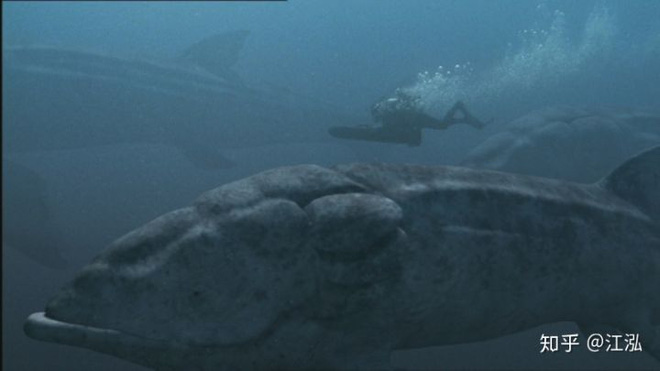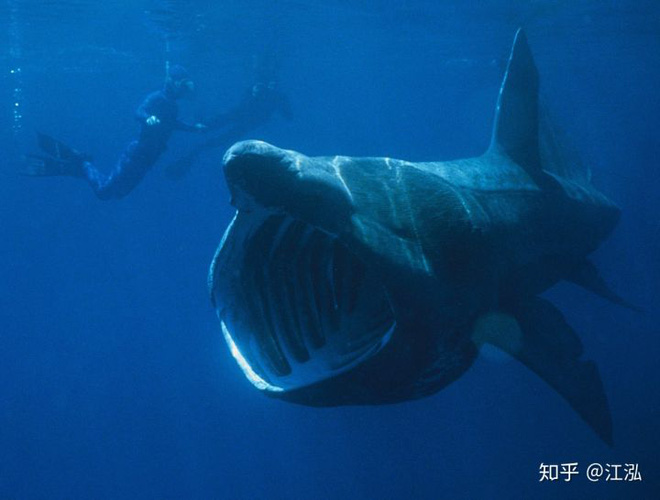Leedsichthys: The 'vacuum cleaner' of the Jurassic Sea was once misunderstood as a dinosaur
Leedsichthys (Leeds) is a giant fish first discovered in England in the 19th century by an aristocrat named Alfred Nicholson Leeds. An amateur scientific researcher who owns a lot of land in his hand, Alfred Nicholson Leeds leases people land and doesn't need to directly cultivate it, so he can spend a lot of time on his personal hobby - collecting Animal fossils.

Alfred Nicholson Leeds, who discovered the giant fish species Leedsichthys (Leeds).
In a loam pit (a soil pit composed mainly of sand, mud and a small amount of clay) near Peterborough, Leeds found gigantic fossils. In May 1886, John Whitaker Hulk, after seeing fossils found by Leeds, thought it belonged to a dinosaur in the Stegosaurus family.
And also because Halk said it was such a dinosaur, Leeds did not pay much attention to those fossils. On August 22, 1888, Marsh, a famous American paleontologist, who had a "fossil war" with Ted Koppel, visited England and was invited to Leeds' home. When he passed the fossils, Marsh confirmed that this was a giant prehistoric fish rather than a dinosaur, but at that time, because of the time that was not allowed, he could only say so and No further research on these fossils is possible.

Fossils of giant fish are mistaken for dinosaurs.
Shortly after that brief visit, news of the discovery of Leeds' prehistoric fish was quickly spread throughout the United Kingdom and two months later, biologist Arthur Smith Woodward knocked on the door. of Leeds.
An expert in ichthyology, Woodward named the ancient giant fish, Leedsichthys problematicus, the next year, after studying the fossils that Leeds found. The name of the genus was taken from the name of the person who first discovered the fossil record of this species.

Arthur Smith Woodward
After the Leeds fish was named, a group of scholars said that "this name is too obscure and it must be changed!". So Woodward changed the name to Leeds fish to "Leedsia", but this new name has not been used to this day, and scientists still use the original "Leedsichthys" name, which is a name. or the naming convention in paleontologists.
Leeds, with the honor of being given the name of its own fossil, has gained even more motivation in finding the fossil of this giant fish. In addition to finding and purchasing fossils, he also sold them. On March 17, 1889, he sold a Leeds fishtail fossil to the British Museum of Natural History for £ 25.
During this period, Leeds also had a rival. A collector named Henry Keeping also raised the idea of an ancient fish fossil of the land of fog. He purchased a fossilized Leeds dorsal fin in Wales at a low price through an amateur fossil miner and sold them to Cambridge University. In 1901, the famous German paleontologist Friedrich von Huene saw this fossil when he visited Cambridge University. He also mistakenly thought it belonged to a species of dragon sword.
In 2001, a fossil of Leeds fish was found at a fossil site called a "Starhole". Fossils of Leeds fish are often found here, so people think of the "on and on and on" slogan of the Ariston water heater brand and this newly discovered fossil is named "Ariston".

Employees are digging fossils.

Researchers are protecting fossils of Leeds fish.
From 2002 to 2004, Jeff Liston, a paleontologist at the University of Earth Sciences at Bristol University, led the "Ariston" excavation. People moved tens of thousands of tons of rock and soil and were finally able to successfully excavate and clean up the fossil record. During the excavation, Radio Four UK recorded and produced The Big Monster Dig on TV. At that time, the BBC's "Sea Monster" was famous all over the world (with the arrival of Leeds), and Leeds became a "new phenomenon".

Leeds fish fossils in the laboratory.

In the BBC's "Walking with Sea Monsters", the body length of the Leeds was set at 28 meters, the size of a blue whale.


The image of a simulated Leeds song created by the BBC has a definite fault in the ventral fin. Studies have shown that Leeds fish do not have pelvic fins but anal fins.
In fact, the size of the Leeds fish has always been controversial. Woodward estimated that its length was 9 meters; by the 1980s, some people had used formulas to calculate and they assumed that the fish's body length was 27.6 meters, and even is 35 meters.
Upon discovering "Ariston" - a more complete fossil, Reston pointed out that Woodward's claim was reasonable, then he analyzed a large number of fossils, and eventually issued a comparison. Age and size comparison: Leeds fish when 20 years old have a body length of 10 meters, 31 years old from 11.4 to 14.9 meters, and when 45 years old 16.5 meters long. In fact, this does not mean the maximum size of a Leeds fish is 16.5 meters, but the oldest individual they find reaches this length. And if a Leeds individual reaches the age of 50, then it is certain that they will have a larger size.

Leeds fish are a filter feeder and they live like whales and bream sharks today, swimming around the sea with their mouths open all day. Seawater enters the oral cavity with plankton, algae, jellyfish, small fish, shrimp, etc., and then the seawater is filtered through their gills. Leeds fish have a special gill structure that acts as a filter to hold food. To be able to eat more, Leeds fish also dive to the ocean floor to stir sediment in search of food.

Through fossil analysis, paleontologists learned that the Leeds fish lived 160 million years ago, their fossils were found not only in England, but also in France, Germany, even in Chile.
Leeds fish lived during the Earth's era with many famous ancient creatures, including the Rock Chrysanthemum Stratum, Metriorhynchus, Ophthalmosaurus, Liopleurodon, Plesiosaurus .
In the eyes of many animals, the Leeds fish possesses a large but not aggressive body like when the food is stored mobile. Fossils of this fish often include the bites of the sea lizards Metriorhynchus and Liopleurodon, so it is not easy for a Leeds fish to grow from eggs until reaching the size of 16 meters. and the success rate seems to be very low because they have not grown up, it has become a good bait for other species.

You should read it
- 15 most giant animals in the natural world
- Effect of Hepa filter in household vacuum cleaner
- Good tips to help use vacuum cleaners effectively
- Top vacuum cleaners priced under 2 million are hunted for the end of the year
- Video: Giant water beetle stalks to catch turtles, fish, snakes in the water
- Which country is the Electrolux vacuum cleaner, which one is the best?
- Listed 10 largest species of creatures in the ocean
- Piranhas, carnivorous fishes who easily bite off metal wires in a flash
May be interested
- Review 3 best industrial vacuum cleaners today: Tiross, Karcher and HiClean
 what is industrial vacuum cleaner? are there any types? should i buy any good: tiross, kacher or hiclean? find out immediately the information on this type of cleaning equipment on a large scale!
what is industrial vacuum cleaner? are there any types? should i buy any good: tiross, kacher or hiclean? find out immediately the information on this type of cleaning equipment on a large scale! - Tell you which car vacuum cleaner is good, cheap?
 good quality, cheap resale price, and why are these car vacuum cleaners chosen and used by so many people.
good quality, cheap resale price, and why are these car vacuum cleaners chosen and used by so many people. - Nelson A3 vacuum cleaner Robot: cleaning the house and vacuuming automatically, soft price
 smart vacuum cleaner robot has been widely known and applied in life, one of which is probot nelson a3 smart vacuum cleaner robot - cheap version of nelson a3s.
smart vacuum cleaner robot has been widely known and applied in life, one of which is probot nelson a3 smart vacuum cleaner robot - cheap version of nelson a3s. - Smart vacuum cleaner any kind of good Xiaomi, Philips, Medion?
 the presence of smart vacuum cleaners is the solution to help clean and clean the house faster and simpler than ever. so which smart vacuum cleaner is the best on the market today? this article, quantrimang will help you find the answer.
the presence of smart vacuum cleaners is the solution to help clean and clean the house faster and simpler than ever. so which smart vacuum cleaner is the best on the market today? this article, quantrimang will help you find the answer. - Jurassic dinosaur eggs from Jurassic era were discovered in China
 the latest finding shows that while digging a new school's foundation, construction workers found a perfectly preserved dinosaur nest.
the latest finding shows that while digging a new school's foundation, construction workers found a perfectly preserved dinosaur nest. - How does a vacuum EC-HX100 work?
 operation based on smart technology, mattress vacuum cleaner and sharp ec-hx100 has become an effective assistant for many families.
operation based on smart technology, mattress vacuum cleaner and sharp ec-hx100 has become an effective assistant for many families. - What kind of mini vacuum cleaner is it?
 with outstanding design and high performance, these mini vacuum cleaners are being trusted by many consumers ...
with outstanding design and high performance, these mini vacuum cleaners are being trusted by many consumers ... - Why will many people never use robot vacuum cleaners again?
 robot vacuum cleaners are heavily advertised, but they don't live up to expectations. despite their countless promises, many people have given up on their robot vacuums - and for more than one reason.
robot vacuum cleaners are heavily advertised, but they don't live up to expectations. despite their countless promises, many people have given up on their robot vacuums - and for more than one reason. - Xiaomi launched the vacuum cleaner robot Mi Robot 1S capable of memorizing maps, scanning each room according to the installation schedule
 xiaomi has just launched mi robot 1s, the upgraded version of the robot vacuum cleaner model is quite popular and is being sold genuine in vietnam.
xiaomi has just launched mi robot 1s, the upgraded version of the robot vacuum cleaner model is quite popular and is being sold genuine in vietnam. - Which country does Shimono vacuum cleaner use?
 the true quality of shimono vacuum cleaner is something that many users in vietnam care about.
the true quality of shimono vacuum cleaner is something that many users in vietnam care about.










 Paleontologists discovered the fat on the body of the fish lizard 180 million years ago
Paleontologists discovered the fat on the body of the fish lizard 180 million years ago Alcoholic anti-virus like?
Alcoholic anti-virus like? Interesting things about the eggs of animals
Interesting things about the eggs of animals 11 interesting photos that explain the questions about the world around us
11 interesting photos that explain the questions about the world around us Why are humans susceptible to animal diseases?
Why are humans susceptible to animal diseases? Why is the sky blue and not any other color?
Why is the sky blue and not any other color?